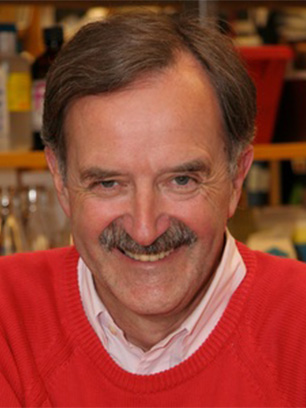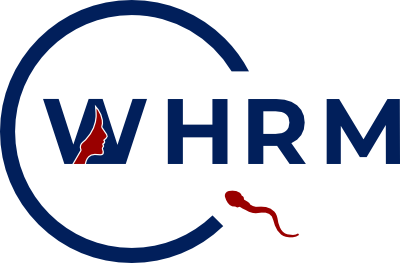
Garret A. FitzGerald
Institute for Translational Medicine and Therapeutics
Room 10-122, Smilow Center for Translational Research (SCTR) 34th and Civic Center Boulevard Building 421Philadelphia, PA 19104-5158
Office: (215) 898-1185
Fax: (215) 573-9135
Research Area
Professor of Medicine (Translational Medicine and Human Genetics)
Additional Appointment Titles
- Associate Dean for Translational Research, University of Pennsylvania Perelman School of Medicine
- Director, Institute for Translational Medicine and Therapeutics, University of Pennsylvania Perelman School of Medicine
- Senior Advisor to the EVP and Dean, University of Pennsylvania Perelman School of Medicine
Graduate Group Affiliations
Links
- Search PubMed for articles
- FitzGerald Lab
- “Garret FitzGerald, Renaissance Man,” Penn Medicine, pg 6-11, Spring 2001.
- Dr Garret A FitzGerald, University College Dublin Graduate, awarded RDS Boyle Medal, in association with The Irish Times
- Faculty Profile, Institute for Translational Medicine and Therapeutics (ITMAT), University of Pennsylvania School of Medicine
- PENTACON (The Personalized NSAID Therapeutics Consortium)
- Faculty Profile, Penn Cardiovascular Institute, University of Pennsylvania School of Medicine
- The Chronobiology program at Penn was created in 2013 to bring together researchers working in the very diverse areas impacted by circadian clocks.
- Faculty Profile, Graduate Group in Pharmacological Sciences, University of Pennsylvania School of Medicine
- Faculty Profile, Department of Pharmacology, University of Pennsylvania School of Medicine
Education
- MB, BCh (Honors)
University College, Dublin, Ireland, 1974. - Diploma (Statistics)
Trinity College, Dublin, Ireland, 1977. - M.Sc. (Statistics)
University of London, 1979. - M.D. (Medicine)
University College, Dublin, 1980. - D.Sc. (Honorary)
University of Edinburgh, UK, 2004. - D.Sc. (Honorary)
National University of Ireland (150th Anniversary), Dublin, 2004. - M.D. (Honorary)
Johann Wolfgang Goethe University, Frankfurt, Germany, 2007. - D.Sc (Honorary)
King’s College, London, UK, 2013.
Post-Graduate Training
- Internship in Gastroenterology/Therapeutics (Professor O. FitzGerald), St. Vincent’s Hospital, Dublin, Ireland, 1974-1974.
- Internship in General Surgery (Mr. J.P. McMullin), St. Vincent’s Hospital, Dublin, Ireland, 1975-1975.
- Senior House Officer in Hematology and Oncology (Dr. L.G. O’Connell and Dr. J.J. Fennelly), St. Vincent’s Hospital, Dublin, Ireland, 1975-1976.
- Internship in Urology (Mr. F.A. Duff and Mr. D.G. Kelly), St. Vincent’s Hospital, Dublin, Ireland, 1975-1975.
- Senior House Officer in Endocrinology/Diabetes Mellitus (Dr. M.I. Drury), Mater Hospital, Dublin, Ireland, 1976-1977.
- Fellowship, Wellcome Clinical Research, 1977-1979.
- Traveling Studentship in Medicine, National University of Ireland, 1977-1980.
- Research Register in Endocrinology/Diabetes Mellitus (Dr. M.I. Drury), Mater Hospital, Dublin, Ireland, 1977-1977.
- Research Fellow in Clinical Pharmacology (Professor C.T. Dollery), Royal Postgraduate Medical School, 1977-1979.
- Research Fellow in Clinical Pharmacology, Department of Internal Medicine II (Professor W. Kaufmann) and Research Fellow in Neurology, Max Planck Institut fur Hirnforschung Cologne (Professor K.A. Hossman),
- University of Cologne, 1979-1980.
- Fellowship in Medicine, Alexander von Humboldt Stiftung, Government of the German Federal Republic, 1979-1980.
- Research Fellow in Pharmacology (Professor John A. Oates), Vanderbilt University School of Medicine, Nashville, TN, 1980-1980.
Description of Research Expertise
Our laboratory has two areas of interest – prostanoid biology and the role of peripheral molecular clocks in cardiovascular biology, metabolism and aging. Perhaps the distinguishing feature of our groups is that we pursue interdisciplinary translational science with a focus on therapeutics. Thus, we work in different model systems – mammalian cells, worms, fish and mice – but also in humans. Ideally we develop quantitative approaches that can be projected from our experiments in the model systems to guide elucidation of drug action in humans. To this end, we have long utilized mass spectrometry, initially to target the arachidonate derived lipidome, but more latterly also the proteome.
Currently, we are interested in several aspects of prostanoid research. We utilize a remarkably broad array of mutant mice to elucidate the biology of the two COX enzymes and the prostanoid receptors. We are particularly interested in the comparative efficacy and safety of pharmacological inhibition of COXs versus the microsomal PGE synthase–1. We are interested in the potentially countervailing actions of prostanoids on stem cell differentiation and in elucidating the broader cardiovascular biology of prostaglandins D2 and F2α. Finally, besides inhibitors of mPGES–1 we are interested in the translational therapeutics of various receptor antagonists, aspirin and fish oils.
In the area of clock biology, we are probing the role of the clock in aging in mice and worms and using cell specific deletions of core clock components to look at how communication paradigms between discrete peripheral clocks influence cardiovascular biology and metabolism. Finally, we are taking systems approaches to investigate how perturbation of peripheral clocks result in central clock dependent phenotypes.
Finally, we are involved in the interdisciplinary PENTACON consortium designed to integrate basic and clinical research in 5 systems – yeast, mammalian cells, fish, mice and humans (both in detail and at scale) – with the objective of predicting NSAID efficacy and cardiovascular hazard in patients.
Selected Publications
Catella-Lawson, F, Reilly MP, Kapoor SC, Cucchiara AJ, De Marco S, Tournier B, Vyas SN, FitzGerald GA: Cyclooxygenase inhibitors and the antiplatelet effects of aspirin. New Engl J Med 345: 1809-1817, 2001.
Cheng Y, Austin SC, Rocca B, Koller BH, Coffman TM, Lawson JA, FitzGerald GA: Role of prostacyclin in the cardiovascular response to thromboxane A2. Science 296: 539-541, 2002 Notes: Commentary on: Vane JR, Biomedicine. Back to an aspirin a day? Science 296: 474-475, 2002.
Grosser T, Yusuff S, Cheskis E, Pack MA, FitzGerald GA: Developmental expression of functional cyclooxygenases in zebrafish. Proc Natl Acad Sci (USA) 99: 8418-8423, 2002 Notes: Commentary on the piece: Prescott SM and Yost HJ. The COXes of Danio: From mechanistic model to experimental therapeutics. Proc. Natl. Acad. Sci. (USA) 99: 9084-9086, 2002.
Rudic RD, McNamara P, Curtis AM, Boston RC, Panda S, Hogenesch JB, FitzGerald GA: BMAL1 and CLOCK, two essential components of the circadian clock, are involved in glucose homeostasis. Plos Biology (Public Library of Science) 2: e377, 2004.
Egan K, Smyth E, Fries S, Rader D, FitzGerald GA: Prostacyclin confers atheroprotection on female mice. Science 306: 1954-1957, 2004.
Cheng Y, Wang M, Yu Y, Lawson J, Funk CD, FitzGerald GA: Cyclooxygenases, microsomal prostaglandin E synthase-1, and cardiovascular function. J Clin Invest 116: 1391-1399, 2006.
Wang M, Zukas AM, Hui Y, Ricciotti E, Pure E, FitzGerald GA: Deletion of microsomal prostaglandin E synthase-1 augments prostacyclin and retards atherogenesis. Proc Natl Acad Sci USA 103: 14507-14512, 2006.
Curtis AM, Cheng Y, Kapoor S, Reilly D, Price TS, FitzGerald GA: Circadian variation of blood pressure and the vascular response to asynchronous stress. Proc Natl Acad Sci USA 104: 3450-3455, 2007.
Yu Y, Lucitt MB, Stubbe J, Cheng Y, Friis UG, Hansen PB, Jensen BL, Smyth EM, FitzGerald GA: Prostaglandin F2alpha elevates blood pressure and promotes atherosclerosis. Proc Natl Acad Sci USA 106: 7985-7990, 2009.
Baggs JE, Price TS, DiTacchio L, Panda S, FitzGerald GA, Hogenesch JB: Network features of the mammalian circadian clock. Plos Biology 7: e52, 2009.
Wang D, Patel VV, Ricciotti E, Zhou R, Levin MD, Gao E, Yu Z, Ferrari VA, Lu MM, Xu J, Zhang H, Hui Y, Cheng Y, Petrenko N, Yu Y, FitzGerald GA: Cardiomyocyte cyclooxygenase-2 influences cardiac rhythm and function. Proc Natl Acad Sci USA 106(18): 7548-7552, 2009.
Song WL, Paschos G, Fries S, Reilly MP, Yu Y, Rokach J, Chang CT, Patel P, Lawson JA, FitzGerald GA: Novel eicosapentaenoic acid-derived F3-isoprostanes as biomarkers of lipid peroxidation. J Biol Chem 284(35): 23636-23643, 2009.
Hui Y, Ricciotti E, Crichton I, Yu Z, Wang D, Stubbe J, Wang M, Puré E, FitzGerald GA: Targeted deletions of cyclooxygenase-2 and atherogenesis in mice. Circulation 121(24): 2654-2660, 2010.
Grosser T, Yu Y, FitzGerald GA: Emotion recollected in tranquility: Lessons learned from the COX-2 saga (Review). Annu Rev Med 61: 17-33, 2010.
Paschos GK and FitzGerald GA: Circadian clocks and vascular function (Review). Circ Res 106(5): 833-841, 2010.
Skarke C and FitzGerald GA: Training translators for smart drug discovery. Sci Transl Med 2(26): 26cm12, 2010.

